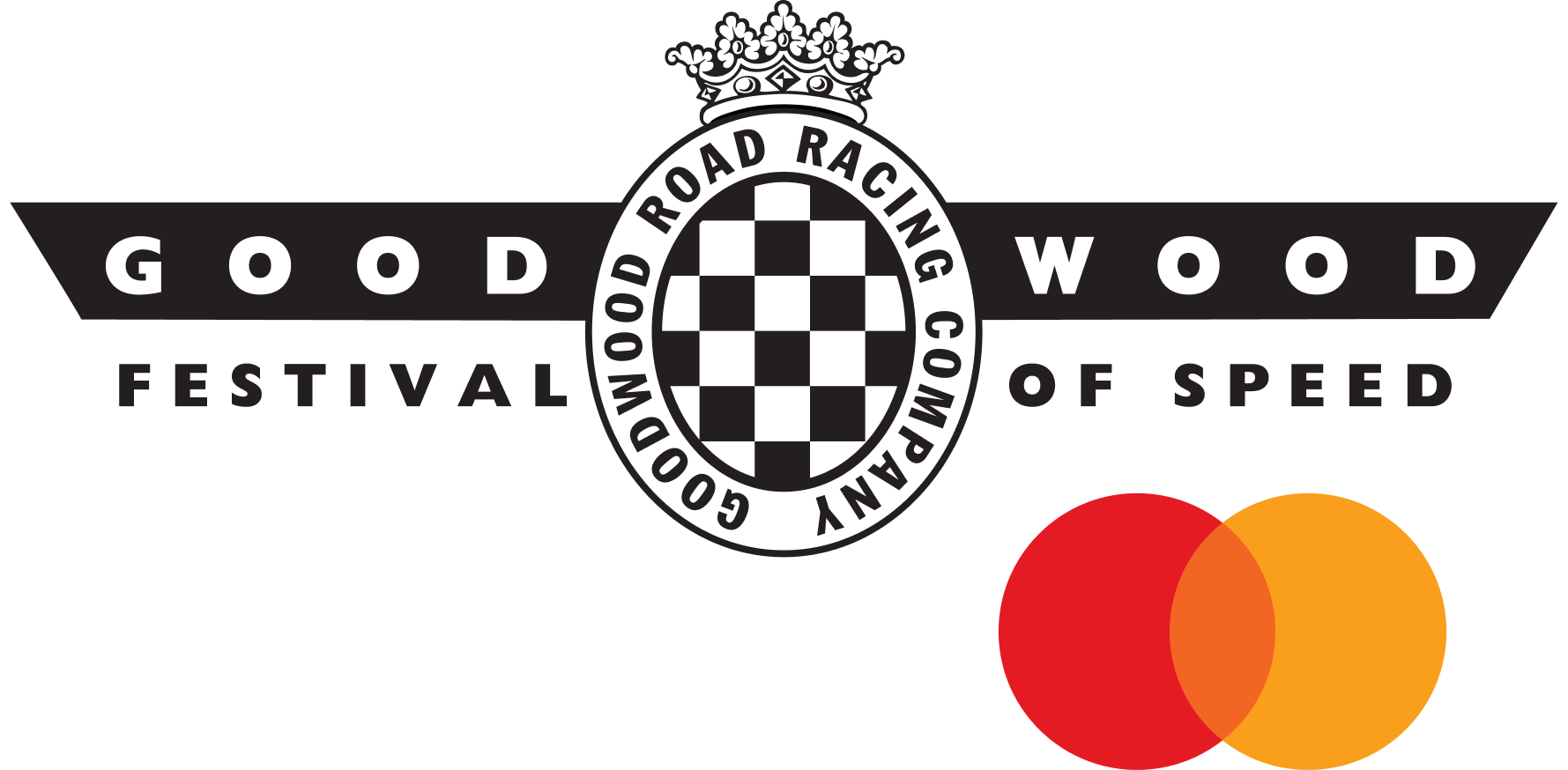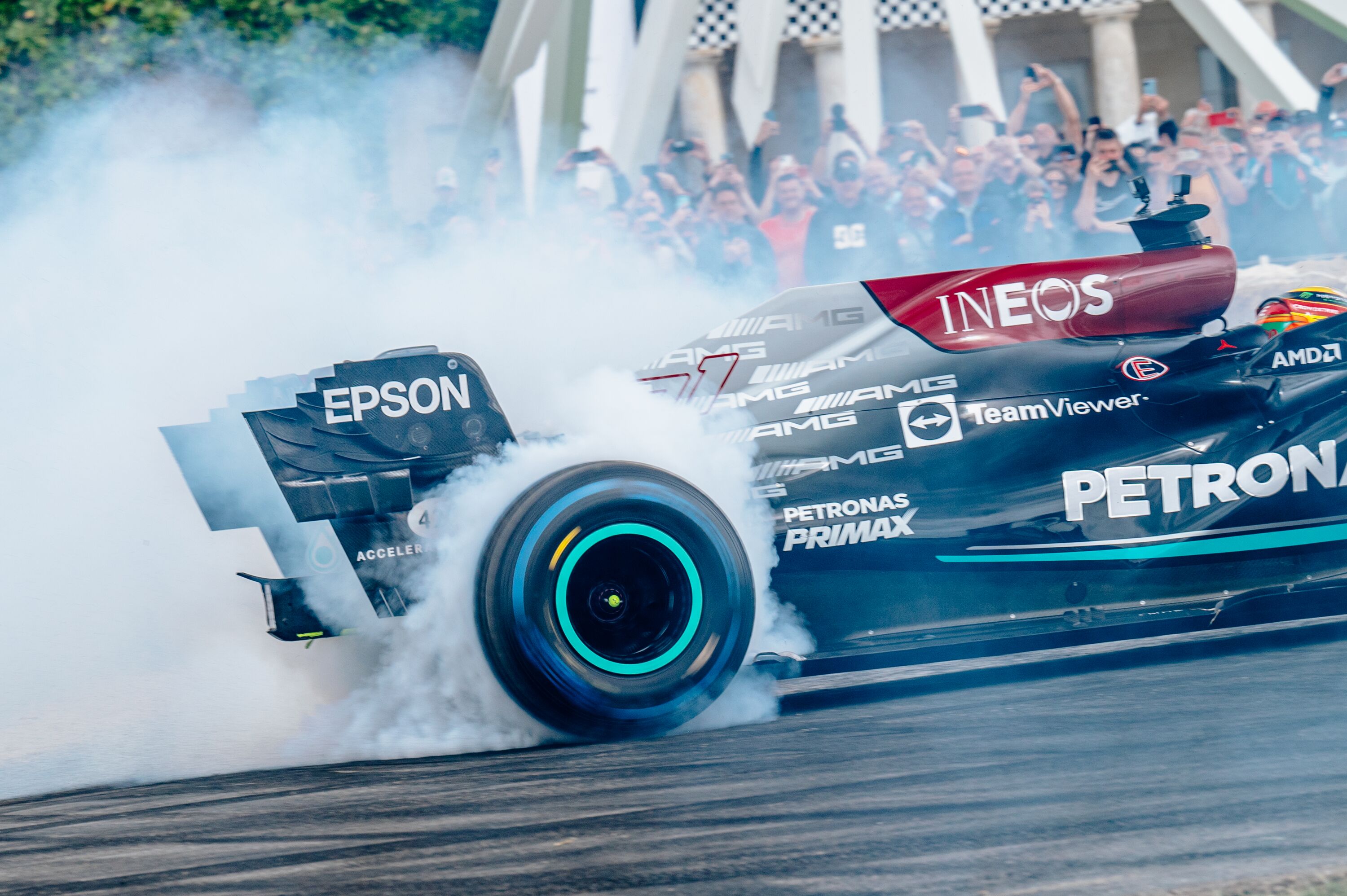Meet Senna’s McLaren mechanic
Nothing we can say about the driving of some of the all-time great F1 drivers hasn’t already been said before, but what about the man behind the car? In the case of the likes of Ayrton Senna and Alain Prost during the seminal 1988 Formula 1 season, that would be a Mr Neil Trundle. He was chief mechanic for Ayrton at the time and the caretaker for McLaren’s golden child, the MP4-4. What’s more, the now widespread concept of a carbon composite chassis traces back to a lead he chased.

Neil was at Goodwood SpeedWeek presented by Mastercard for what was his final event officially as a McLaren employee. He’s retiring, after 33 years at McLaren in various capacities and a life dedicated to racing. We thought we’d hunt him down for a chat and reflection on that golden era for McLaren and Formula 1.
We say employee but that does rather a disservice to the probable fact that he, along with his friend Ron Dennis (the very same), ushered in an iconic era in McLaren’s history and that without him, the name simply wouldn’t mean what it does today. But we’ll get to that.

Beginnings with Brabham, Rondel and Tyrrell
In 1968 Neil worked as a mechanic on the Brabham Formula 1 team working alongside Ron Dennis with Jack Brabham and Jochen Rindt driving. With Brabham he travelled the world for F1 and IndyCar work, all the while forming a friendship with Ron. After Jack Brabham’s retirement, Neil left to pursue his own race career, building and driving a Formula Ford. Before too long he was back with Ron forming a new squad. Rondel racing was a taste of things to come when it came to Ron and Trundle – strong sponsor relationships and a string of successes, in 1971, ‘72 and ‘73. The 1973 oil crisis however brought everything to a screeching halt.
Trundle’s next project, the Token Formula 1 car, a carryover project from Rondel, was in his words, “one of the toughest times and the hardest I’ve ever worked in my life”.
“We worked night and day for eight weeks, hardly sleeping, to get the car ready. But we would have done it for nothing because that’s our passion.” Trials and tribulations that would build character and test the strength of that passion, ready for what was to come.
Trundle then moved on to Tyrrell, working in period with the six-wheeled Tyrrell P34 and being the first person to test it, in the absence of drivers Jody Scheckter and Patrick Depailler. “A wild idea and a lovely car,” he reminisces. “One of my favourite cars.”

Project 4, carbon chassis and McLaren
But it wasn’t long before Ron came knocking again, this time with Marlboro money and eyes on Formula 2, BMW Procars (with Niki Lauda), Formula 3 and eventually, Formula 1. Project 4 saw the dream team of Ron Dennis, legendary designer John Barnard, Neil Trundle and Kryton Brown assemble and bring forth arguably the greatest advancement in the last four decades of Formula 1.
Any car that has ever utilised a carbon construction, be it a racer or road car, can trace its lineage back to a phone call on a whim by Neil Trundle investigating aerospace materials. It’s that decision to proceed with the carbon chassis that ensured the amalgamation of Project 4 and McLaren would happen. Project 4 lived on in all subsequent cars, too, with the MP4 designation that ran until Ron Dennis’ departure from McLaren in 2017. Project 4’s revolutionary carbon car became McLaren MP4-1, as raced in the 1981, 1982 and 1983 seasons, succeeding the M30 and signifying a change in fortune for McLaren.
“It was such an exciting and revolutionary car,” Neil said, reflecting. “We put it together by hand and when we got it back from America, we knew we’d made history. When we did the twist test, it was 100 percent stiffer than anything. No one could get a narrow chassis stiff enough for ground effect but we had it. That MP4-1 brought McLaren right back up to the top.”
Following the amalgamation, Trundle moved on from McLaren to set-up his own Formula 3 team, which saw big success in the first year. After four years, though, he was back at McLaren in time for the 1988 season. “I’m immensely proud of Ron for securing that TAG-Porsche deals on those engines while I was away,” he said. “I do regret the F3 venture, having not been there for that.”

MP4-4 – The Golden Child
For 1988, McLaren had the MP4-4 – the last car to use the turbocharged engine, which would be outlawed for the following season. What a send-off ‘88 would turn out to be. Winning all but one race, at Monza, the MP4-4 was the perfect weapon with which legendary rivals Ayrton Senna and Alain Prost could do battle, with even odds, in the same superior car.
“Eighty eight was so easy” Trundle recalls gleefully. “The car, out of the box, was lightning quick. Everyone said they’ve limited the fuel, the boost – the NA cars will be a match. They weren’t. Our Honda, and our car – that car – was magic.
“At the first test, Prost jumped in and went out for a run. He came in, we stripped the car, checked it over, put it back together and he went out again. When he got back – and he might not have even got out of the car before he said it – he said to Ron “that car could win us the championship”. The car was so quick, we’d have to put water down before it came in after a hot lap, to stop the tyres sticking. If they did, we’d risk breaking the suspension when jacking it up.
“Senna got in, of course he had to go quicker than Prost. He went two seconds quicker than anyone else, and Ferrari said “well, they’ve turned up the boost”. They knew we hadn’t by the end of race one.
“It was sleek, light, and had good straight-line speed. The engine was strong so we could run a wing like a barn door. You could never really suss why it was as quick as it was. It was that quick. There was something magic about the MP4-4. So that was an easy year. We didn’t have to do a lot. We did so well in ‘88 and ‘89, that’s why I left. I didn’t think I could better that.”

Legendary personalities – Senna, Prost, Brabham, Rindt and more
As race mechanic during that legendary season, Neil had face-to-face time with these F1 legends that few can match, at their best and at their worst. Alain and Ayrton were so effective at their craft but in near polar-opposite ways. You might expect their different styles would mean they’d have their cars run totally different. You’d be wrong.
“Alain always drove within himself, until he decided to push it. At Paul Riccard, for his home race, the French Grand Prix, Alain decided it was his race. He put it on pole, and beat Ayrton fair and square. Most of the time, he kept a little bit in reserve and that’s why he never crashed. The guys called him The Professor because of how good he was at setting up a car.
“Prost used to say of Ayrton “he’s willing to risk it to get the pole”. Ayrton was very special and you saw that all the way through, from F3. Ayrton actually always followed Alain’s setup. He was very analytical, spending hours trying to get every last bit out of the car and then drove to it to the limit.
“Brabham was clever, very clever, and could do anything on a car. He was also super calm and never agitated. I remember we had a heart monitor on him during a spin at Indy – his heart rate never went up. He was so cool – very special – and always nice to us guys. One of my heroes.
“Rindt was another Senna. On a single lap, there was no one quicker. He was confident to a fault and brave as hell. There’s not a driver I’ve worked with, from Brabham

On Ron Dennis
Ron Dennis is, it’s fair to say, infamous for his unique way of doing things. The precision, the dedication to detail and the discipline when his standards weren’t being met. It all earned him quite the reputation, so someone who worked with him on and off for near-on four decades naturally offers valuable insight. Trundle’s respect for his former colleague and friend is boundless.
“The man at Brabham was the same then as he is now. Absolutely fastidious, OCD and everything had to be absolutely perfect. He’s a driving force and can pull people in. A bit like our founder Bruce McLaren. There are quotes about Bruce from mechanics – “If Bruce came in and told us to down tools and follow him on a walk across a desert, we would”. Ron had that same affect.
“He’s a unique guy, a self-made man and was always going to get there. He’s tough, doesn’t take prisoners and says it like it is. He’s done well, he’s put his work in 24/7 and absolutely deserves everything he has.”
Transition to McLaren Heritage
Following the 1988 and 1989 seasons, Trundle bowed out as the (boss) travelling mechanic, taking a position working with transmissions by the time the husky Honda V12 arrived. Before long he made his way into the Heritage department, looking after McLaren’s bygone legends, from the early Can-Am cars, to the F1 machinery, following the cars around to various events, including multiple visits to Goodwood, to keep them fighting fit. The MP4/4 was always his baby, though.
“I liked the older stuff – the M8s, the M23, all the way up to the 4/4. The newer stuff with more computers isn’t quite my speed.
“Goodwood events are just magical and we all want to see them continue. We’re all passionate about the sport. That’s why we’re here.”
That brings us to present day. Over the years he’s taken a more distanced managerial position, having overseen the growth of a capable team to look after the cars. He leaves them after SpeedWeek in skilled, safe hands. SpeedWeek being the event to fit the times, wasn’t actually orchestrated as his retirement blowout.
“The 25th of October is my 76th birthday so I planned on retiring then,” he explains. “SpeedWeek just happened to come beforehand. I’m here, I don’t need to work on the cars. I’m what they call an ambassador. They’re starting what they call the Papaya retirement group, for McLaren people that put in 20 years before they retire. I’ll consult and I’ll visit regularly but officially, I retire on the 26th”. If anyone deserves entry into the ‘Papaya Group’ it’s Neil Trundle. Perhaps his partner in the salvation of McLaren, Ron Dennis, deserves one too.
Neil Trundle
Ayrton Senna
Ron Dennis
Alain Prost
Jochen Rindt
David Brabham
McLaren
MP4-1
MP4-4

































































